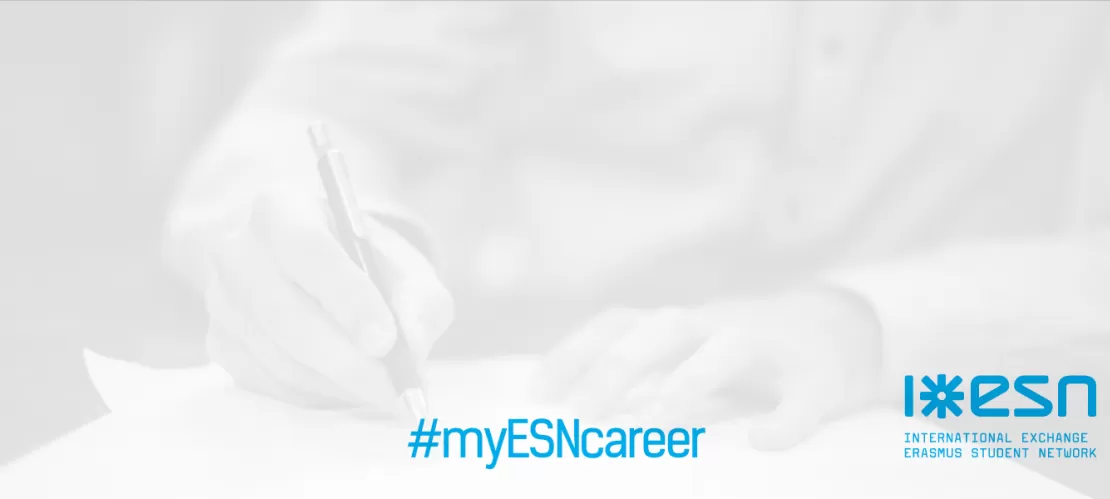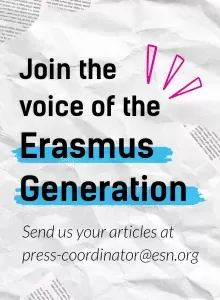Let’s get it going, here are the do’s and don’t’s of a volunteer’s CV.

Volunteering can be work experience
We couldn’t stress this one out enough. Although many CV frameworks say that volunteering is a separate block in a CV, what matters in the end is what you’ve been doing. And what you’ve been doing is giving you the skills and experience that is needed in the big world. Have you lead a team of people? That is a work experience just like any other job, don’t underestimate yourself. Have you dealt with customers or organised events? These are the skills that might give you the extra edge you’ll need!
Don’t overthink the structure
A good CV is a simple CV. There are so many “creative” CV out there, however, think about if you find what you need in those. Imagine you’re reading 20 CVs a day—if you don’t find what you’re looking for in the first 5 seconds it’s most probably going to trash. Keep it simple is the general rule, just like with so many other things. Intro, work experience, education, skills & languages, and interests do the trick in 99% of the cases. One block below each other, just like we are used to read. No need to challenge Monet’s painting with what needs to clear and readable.
Make it look good
Readable is actually the key word in here. Make sure you adjust the CV to the medium you’re sending it in. Is it a printed CV? Invest in some quality paper. Are you sending it via email? Save it as a .pdf file to make sure it looks the same on every computer. What about the design? You don’t have to be an award-winning graphic designer to make your CV look good. Read a little bit about typography. Think about what are the important bits and what is their structure. Usually this comprises of what was your position, what was the company, how long you did it, and what you did. Still feels like an overwhelming task? Try some of the online tools, such as Europass, EnhanCV, or Kickresume.
Here’s an example using just the basic formatting tools any text editor gives you:
WORK EXPERIENCE
President at ESN Reykjavík
Erasmus Student Network Iceland
January 2015 – January 2016
Leading 8 different teams of total 70 colleagues we take care incoming exchange students to Iceland. During my mandate we managed to organise more than 30 events for the exchange and local students and expanded our core team to include 3 more volunteer positions. This experience awarded me with great leadership and stress-reliance skills that make me an efficient team coordinator.
Be concise
And that’s it! Have you noticed how to-the-point the position description is? The person reading your CV is not interested in all the stories, as much as the phrase Curriculum Vitae might be misleading. They want to hear about what you accomplished. What did you do in those volunteer positions? Have you overcome a major crisis? That’s worth mentioning. Have you increased the traffic on your website by a significant amount? Say how much. Numbers work magic when used in the right place.
Be relevant
Every CV you sent should be tailored to the needs of the position. And yet it’s so easy to fall into the I-need-to-show-everything-I’ve-ever-done trap. Stop for a moment. Is it really relevant for your employer to see where you’ve done your secondary school? Possibly the cashier job you took in the 9th grade might not be too interesting if you’re applying for a programmer position. On the other hand, showing the opportunity you had to develop your soft-skills through your volunteering might be gold. Your CV should fill no more than one, maximum two A4 pages. And these pages have to be gold. Not gold for you but gold for the employer. Have you thought about adding your three most relevant skills you have and how they can help the company?
Leave the fluff out
Ever heard of the term “buzzwords”? Well, they don’t work anymore. It’s exactly those words that make you look like an accomplished vacuum cleaner salesman. Being a “team player” and seeing “synergies” are basically meaningless these days. Instead, focus on actionable words, such as “improved”, “created”, and “increased” when mentioning your volunteering experience.
Include references
Now to give your words the actual value, the “improvement”, “creation”, and “increase” need to be supported by facts. The easiest way to do this is to include a contact for someone who worked with you or managed you. These people will be more than happy to vouch for you, wouldn’t they? Leave a contact for your volunteer colleagues and they will most probably be contacted, supporting the statements you made in the CV. Also don’t forget to link your online profiles, such as a LinkedIn account or your website.
Show your interests
This is a part of the CV that is commonly given zero interest by the HR people. Mainly because “music”, “friends”, and “travelling” take the most common top spots in this list. Why don’t you show things that can help you impress the employer? Here’s where all the extra volunteering comes in the spotlight. How about your active involvement in the youth rights European scene or being an avid blogger? In the end, any small detail can push you forward.
Keep it up-to-date
This should be a tradition. Going back to your CV every couple of months and reviewing it. Life changes rapidly. Updating the dates, switching the 2-month long experience from 5 years ago for something more current. You might even find some better ways to phrase some bits here and there. It is the process of constant iteration, improving it little by little that makes an outstanding CV.
Don’t forget the work experience
This one goes without saying, right? Most of what we said here applies to the work experience. This doesn’t mean though you shouldn’t treat your volunteering experience the same way. After all, what you did matters the most, not whether it was for money.
And that’s it. Run your CV by this checklist before sending it out next time. You’ll make the hiring people a little bit happier. And you know what a happy hiring person means.
#myESNcareer
